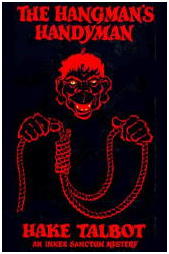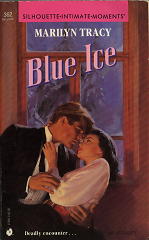MAX MURRAY – The Right Honourable Corpse.
Farrar Straus & Young, US, hardcover, 1951, as The Right Honorable Corpse. Hardcover reprint: Unicorn Mystery Book Club, 4-in-1 edition, April 1951. US paperback reprint: Collier, 1965, as The Right Honorable Corpse. British hardcover: Michael Joseph, 1952. British paperback reprint: Penguin #1203, 1957.

Back when he was actively writing, which was up right up to his untimely death in 1956, Max Murray was never one of the big names in the field of mystery fiction. Even though he had a respectable string of detective novels in a ten year stretch between 1947 and 1957, he may not even have been in the second or third tier of big names, in spite of the fact that many of his books were reprinted in this country by Dell in paperback and either the Detective Book Club or the Unicorn Mystery Book Club in hardcover.
The problem may have been that he never used a series detective. I’ve thought this of several mystery writers before, but I don’t believe I’ve ever quite come out and said it. I think it takes a steady focal point, a recurring detective character that the readers can feel comfortable with before they’ll take the author to heart as well.
With obvious exceptions, of course. But authors like Andrew Garve and E. X. Ferrars, to take two rather disparate examples, were extremely prolific and presumably very popular in their day, are all but totally forgotten now. Ferrars did have a few recurring characters, but if you can name one without going and looking up her bibliography, you are the winner of today’s trivia contest, and truth be said, when Garve wrote as either Roger Bax or Paul Somers, he did have a couple of series characters. You’re this year’s trivia champion if you can name either.
And I’m straying from the review of the book in hand, without making a very solid case for my conjecture, I’m afraid, but perhaps I’ll return to it some day.
Here below is Murray’s entry in Crime Fiction IV, by Allen J. Hubin, along with a few facts about him, most of which I didn’t know, until I looked him up earlier today:
MURRAY, MAX(well). 1901-1956. Born in Australia; newspaper reporter in that country, the U.S., and England; scriptwriter and editor for BBC during WWII; married to author Maysie Greig.
The Voice of the Corpse (Joseph, 1948, hc) [England] Farrar, 1947.
The King and the Corpse (Joseph, 1949, hc) [France] Farrar, 1948.
The Queen and the Corpse (Farrar, 1949, hc) [Ship] See: No Duty on a Corpse (Joseph 1950).
The Neat Little Corpse (Joseph, 1951, hc) [Jamaica] Farrar, 1950. Film: Paramount, 1953, as Jamaica Run (scw & dir: Lewis R. Foster).
The Right Honourable Corpse (Joseph, 1952, hc) [Australia] Farrar, 1951.
The Doctor and the Corpse (Joseph, 1953, hc) [Singapore; Ship] Farrar, 1952.
Good Luck to the Corpse (Joseph, 1953, hc) [France; Academia] Farrar, 1951.
The Sunshine Corpse (Joseph, 1954, hc) [Florida]
Royal Bed for a Corpse (Joseph, 1955, hc) [England] Washburn, 1955.
Breakfast with a Corpse (Joseph, 1956, hc) [Nice, France] U.S. title: A Corpse for Breakfast. Washburn, 1957.
Twilight at Dawn (Joseph, 1957, hc) [Australia]
Wait for the Corpse (Joseph, 1957, hc) [England] Washburn, 1957.
All of his books were published in the UK, but when they were published in the US, strangely enough they were often published here first. And as befitting his background as a world news correspondent for the BBC, his books take place all over the world, with only two of them in Australia, where he was born. (And as it turns out, where he died, while back on a visit.)

The Right Honourable Corpse is one of the two, as it so happens, and from the description of (a) the closely knit circle of politicians, bureaucrats and diplomats in the small and isolated capital city of Canberra, and (b) life in the beautiful but desolate Australian out-of-doors, you’d think he’d lived there all his life. And, truth be guessed at, perhaps in his own mind, perhaps he did.
Dead, but mourned only on the surface, is Rupert Flower, the powerful Minister for Internal Resources, poisoned to death during a piano concert going on in his home. Vain and vindictive — a dangerous combination — he was a man whose untimely passing was foreseen by many.
Martin Gilbert, the pianist, turns out to be the central character, and I for one would have liked it immensely if he’d ever made a return appearance, which sad to say he did not. It turns out that he is a spy — a domestic one. He works undercover for the new Commonwealth Security Service, and it is not a job that he likes, and his extreme distaste only grows as the case goes on.

Bitter, sarcastic and outwardly enigmatic in tone and behavior, Martin discovers that friendship with the people he is observing does not go hand-in-hand with reporting those observations on to his superior, Sir David Reynolds. Nor is falling in love consistent with the role he is playing, another problem being that one of the possible suspects is also his best friend and in love with the same girl.
The plot is quite largely secondary to the players, but it’s a good one. At the end, it’s also fairly clear why Martin Gilbert was never brought back for an encore. As a character himself, he gave all he was capable of in this one. I don’t think he had another murder case to be solved in him. He is used up, worn out, but never thrown away. No sir or ma’am. Tears seldom come to my eyes at the end of detective stories, but I’m not unwilling to say they did this time.
[UPDATE.] 10-28-08. Taken from a couple of emails sent by Jamie Sturgeon:
Enjoyed your piece on Max Murray, a quick e-mail to point out correct title Wait for a Corpse. There’s a note on Crimefictioniv.com (Part 7) to say Twilight at Dawn was rewritten by his widow Maysie Greig (it says wife but should be widow) and published as Doctor Ted’s Clinic. It is possible that Twilight at Dawn is not criminous or only marginally at best.
Also: In the entry for Maysie Greig in ADB (Australian Dictionary of Biography) Max Murray’s middle name is Alexander and year of birth as 1900. No separate entry for Max Murray.
































